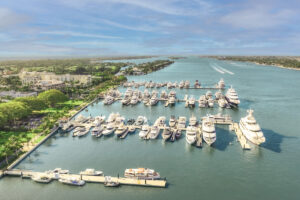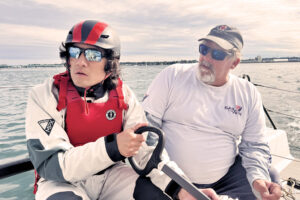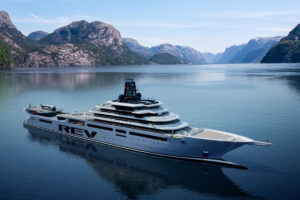June 7, 2010
51°00’.057S 060°24’.081 W
One thing you quickly learn aboard a boat is that you are never really the master of your vessel—the weather is. Yesterday, we set off from Stanley, the capitol of the Falklands, with the idea of spending several days exploring the outermost islands. We left around 1500, in a cold rain, with a low, overcast sky and arrived at Carcass Island around 1130. It was a rough trip, with sustained winds of 37 knots for hours. A few of the best sailors aboard got seasick. I had slapped another patch on, several hours out, after a downdraft from the sail put out the Reflex stove and flooded the boat with diesel fumes that took hours to dissipate. I felt pretty nauseous almost instantly but kept going on deck for big gulps of cold fresh air, and I think the patch probably saved me, once again. Nonetheless, I couldn’t sleep a wink.
I gave up around 0600 and made porridge and tea and coffee for those who wanted it and then stumbled back to bed. Slept for about three hours and felt like a new person when I awoke, just as we dropped the anchor off Carcass Island. But bad news arrived in the shape of the latest GRIB. The next few days looked nice, but after that, it looked like we’d be taking a 30-40 knot northerly wind right on our nose as we made our 1000 mile open ocean passage to Buenos Aires. In other words, unless we left right away, we would be beat up every single day of our crossing. I can tell you that 24 hours of being slammed around takes it out of you. Five or six days in a row of that would be pretty miserable. Of course, sometimes you have no choice. But we did. And so it was decided that we’d pull up the anchor tomorrow and head for Buenos Aires immediately.
It was disappointing news since we had planned several really interesting stops here, but the blow was softened by our trip ashore to Carcass Island. Hundreds of gentoo penguins were strutting the beach, swimming, grooming, socializing. I had several come within two feet of me—like that Fuegian fox in Patagonia, they know of no reason to fear humans. In fact, it occurred to me that standing there in my black foulies, I may have looked a lot like a very large penguin.
The Falkland Islands definitely cry out for a return trip. Roughly the size of Connecticut, but with a population of 2500 people, they receive less than 10 yachts a year here because of their remote location and fierce winds. The islands are 350 miles off the nearest coast of Argentina, and they are “more English than England.” 90-percent of the vehicles on the road are Land Rovers, the English-looking town is dotted with a handful of pubs and most of the population is of British descent. There’s also a large British military base here, which was built after the war between between Argentina and England in 1982. Tensions between the two nations are higher than they’ve been in many years, exacerbated by the discovery of oil off the coast.
We did a tour of the island with local jack-of-all-trades Ian Bury, and drove for six hours, just seeing the upper part of East Falkland. Signs of the war still abound: the remains of a Chinook helicopter in a field, thousands of acres that are still fenced off with warning signs noting unexploded ordnance, and two very moving, windswept graveyards: one, the British cemetery, the other, the Argentine. The landscape is incredibly dramatic, with boulder-strewn hills and fields everywhere, and not a tree in sight, although even East Falklanders say “the West is best,” in terms of prettiness.
Sadly, because of the weather, our visit to the west is ending. But I will definitely add these beautiful islands to the list of places I’d like to return to with an open agenda in my own boat some day.
For a gallery of images from Mary South’s trip around Cape Horn click here.








